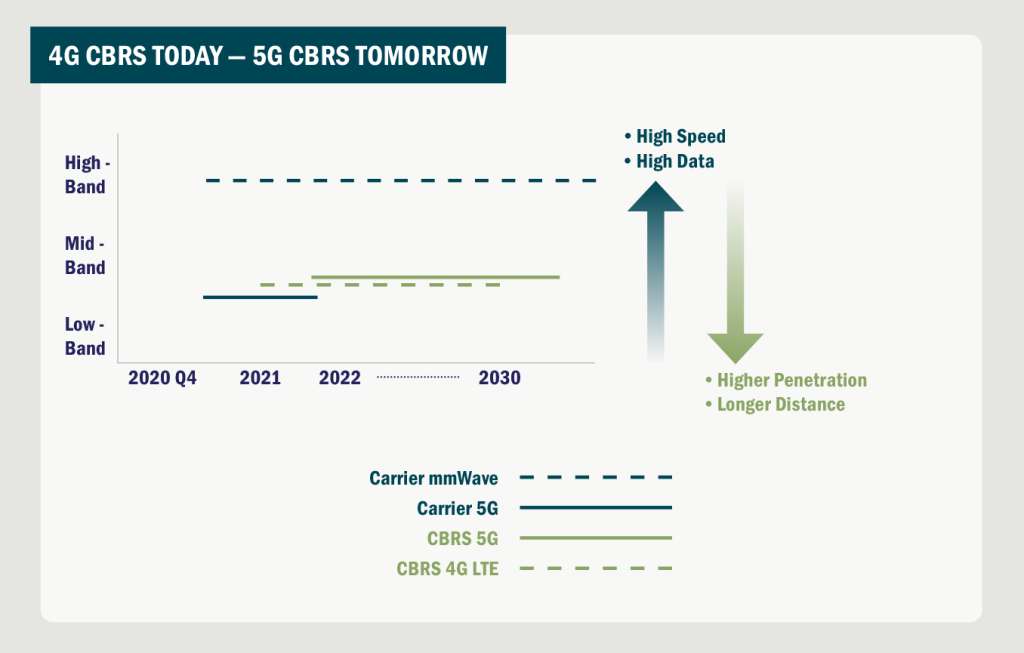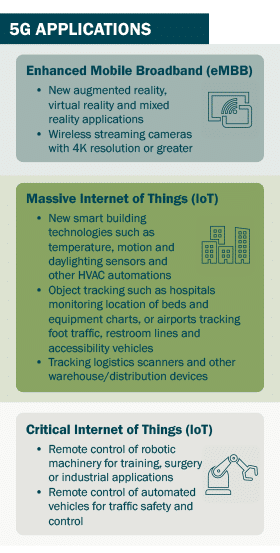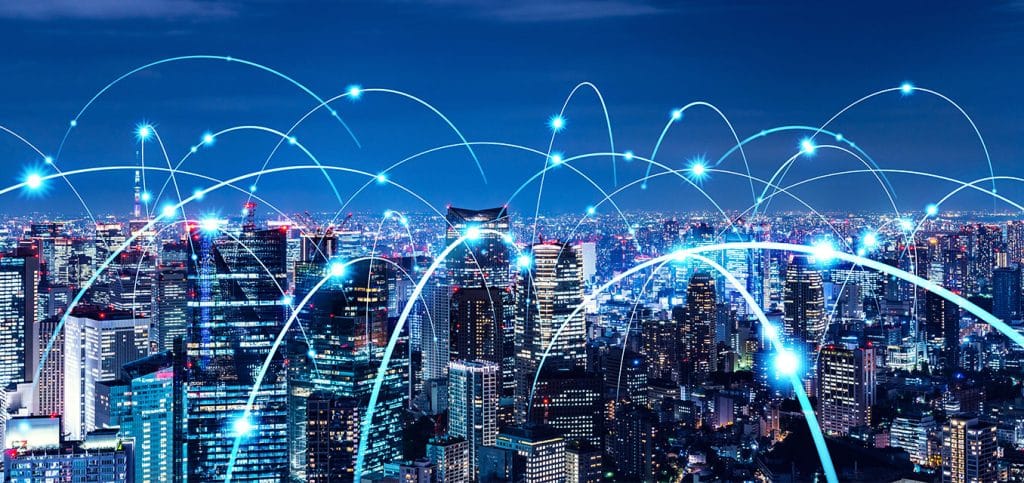Facility Manager’s Guide to 5G Technology
The fifth generation of wireless network technology is coming. The mobile industry promises “5G” will revolutionize connectivity, offering network speeds 100 times faster than current technology.
The technology behind 5G is the stuff of engineers’ electromagnetic dreams. But should facility managers buy into the hype? How should telecommunication systems at airports, hospitals, universities and other large campuses be designed when so little is known of what the 5G future will hold?
“The mobile industry promises ‘5G’ will revolutionize connectivity, offering network speeds 100 times faster than current technology.”
A few 5G basics
5G wireless networks are being offered in two basic species. It is important to develop a basic understanding of each. Let’s cut through the jargon and sort out the marketing hype.
- High Band/mm Wave refers to the area of the electromagnetic spectrum above 24 GHz. Transmitted between microwave and infrared waves, this spectrum can be used for high-speed wireless communications. It is unlicensed, has great capacity and will be the ultimate habitat of 5G for top speeds.
- Sub 6 5G refers to 5G technologies deployed in the spectrum below 6 GHz. Some carriers have taken advantage of the better coverage and better penetration characteristics to accelerate their 5G network rollout, but the performance is not like high band 5G.
- Sub 6 5G Mid-Band refers to 5G technologies deployed in the 3-6GHz spectrum, offering a combination of improved performance in both range and speed over 4G LTE.

Guide for Early Adopters
Faster and more reliable mobile networks spawn a wide range of potential applications. Any development that begins with the adjective “smart” is probably reliant on a 5G wireless network: Smart Grids, Smart Buildings and Smart Cities are processing huge volumes of data in real time. Autonomous ground support or commercial vehicles demand high capacity 5G.
Does that mean 5G will soon be commercially available? Yes and no.
“The performance promise of 5G is only achieved with a 5G-capable mobile device paired to the network.”
 The major telecom companies (AT&T, Sprint, T-Mobile, Verizon) have rolled out versions of 5G networks. But there are a few things to remember about the infrastructure development:
The major telecom companies (AT&T, Sprint, T-Mobile, Verizon) have rolled out versions of 5G networks. But there are a few things to remember about the infrastructure development:
- The rollout is gradual.
Just because a provider claims to provide 5G doesn’t necessarily mean they provide it wherever your facility is located. As of this post, the number of 5G cities is between 10 and 100, with different species of 5G in different locations (see above). These are mostly major urban centers.
- Compatibility is a concern.
The performance promise of 5G is only achieved with a 5G-capable mobile device paired to the network. You can fill an automobile tank with nitromethane, but don’t expect performance like a drag-racing car unless it has an engine compatible with that fuel. Same with 5G.
Commercially, Samsung is shipping 5G devices, but most observers predict that it could be a couple more years for widespread 5G hardware to become prevalent.
- Performance will be inconsistent.
Whereas 3G and 4G technology is able to take advantage of existing infrastructure that exists throughout our current buildings, 5G technology requires access to a new generation of terrestrial coverage and satellites. For this reason, commercial 5G systems are largely designed for outdoor transmission. Particularly in the high band (millimeter wavelength), in-building signal penetration can present some unique performance challenges.
Various design and deployment approaches can circumvent these barriers, tailored to the intended indoor deployment. Emerging solutions are still in the infancy stage, carrying risk until a predominant technology or business model emerges.

Prepare for the Inevitable
Despite 5G registering near the “peak of inflated expectations” on Gartner’s Hype Cycle, it is abundantly clear that the consumer market for 5G is real and will present itself widely in a relatively short period. The aggressive push by telecom carriers and smart phone manufacturers suggests that a transition to 5G is simply inevitable.
Implementation of 5G infrastructure will be most feasible when capital projects are underway or when wireless networks are being upgraded. Even with uncertainties around exactly how the technology will be deployed, rack capacity and pathway can be reserved against future developments, minimizing disruption later. Facility managers are smart to build in the capacity for 5G in all major construction projects.


